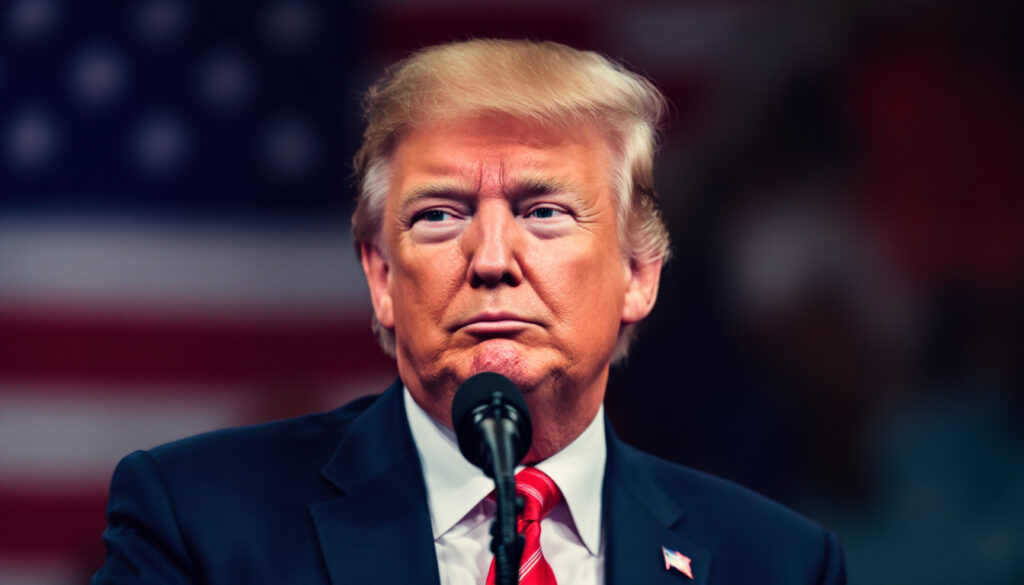Trump's New Tariff Policies: Comprehensive Reciprocal Structure
Trump's tariff plan introduces a minimum 10% baseline tariff on all imported goods entering the United States, effective immediately following his Rose Garden announcement. This universal baseline establishes the foundation of a complex reciprocal tariff structure designed to mirror trading partners' policies toward American exports.
The reciprocal approach calculates tariffs at approximately half the rate that countries levy on U.S. goods. For example, China—which allegedly imposes a 67% tariff on American imports—now faces a 34% tariff. Meanwhile, nations like the UK and Brazil with 10% tariffs on U.S. goods will encounter matching 10% tariffs, as their rate matches the baseline minimum.
Beyond the reciprocal structure, Trump has implemented additional targeted tariffs: 25% on imported automobiles and auto parts (effective immediately), 20% specifically on Chinese goods, 25% on Mexican and Canadian imports, and 25% on steel and aluminum imports globally.
Economic analyst Maria Reynolds notes, "This represents the most comprehensive tariff restructuring in modern American history, applying a mathematical formula to trade policy rather than sector-specific interventions."
Global Trade Response and Market Implications
International reaction has been swift and coordinated. China, Japan, and South Korea have already announced plans for a joint response to U.S. tariffs, while the European Commission has prepared what they call a "strong plan" to retaliate if necessary.
"We're witnessing the potential for the first truly coordinated multilateral response to U.S. trade policy," explains Dr. James Chen, international trade expert. "The alignment between Asian economic powers represents a significant shift in navigating the geopolitical shift in trade diplomacy."
The tariffs are designed to "level the playing field" according to the Trump administration, targeting not only explicit tariffs but also non-tariff barriers that restrict American goods in foreign markets. This approach aims to force negotiations rather than simply punish trading partners.
Market implications extend beyond simple price increases. Supply chains built over decades face potential disruption as companies reevaluate sourcing strategies. Currency markets have already shown volatility, with the dollar strengthening against most major currencies as investors anticipate American economic isolation.
Industry analyst Thomas Wilson observes, "The most significant market impact may not be the direct tariff costs but the uncertainty premium now built into global business planning. Companies are delaying investments until the trade landscape clarifies."
Economic Rationale and Domestic Impact
The administration frames these tariffs as essential to "restoring American manufacturing dominance" and creating what Trump describes as "the golden age of Americans coming back." This policy aims to counter what the administration characterizes as unfair trade practices while using reciprocal pressure to force open foreign markets.
Expected domestic benefits include increased U.S. production, particularly in manufacturing sectors shielded from international competition. The administration projects job creation in protected industries with the long-term goal of lowering consumer prices through reinvigorated domestic competition.
However, economists identify several potential challenges. The immediate effect will likely be price increases for imported goods across multiple sectors. Businesses reliant on global commodities market insights amid shifting trade policies face significant disruption, and retaliatory tariffs will impact U.S. exporters, particularly in agriculture.
"The inflationary pressure can't be overlooked," warns economist Sarah Johnson. "While domestic manufacturing may benefit, the average American consumer will face higher prices for everyday goods before any theoretical benefits materialize."
Recent economic modeling suggests a potential 2.3% increase in consumer prices across affected sectors within the first six months, with automotive prices potentially rising 8-12% due to the concentrated 25% tariff on that sector.
Historical Context and Policy Departure
These new tariffs represent a continuation and expansion of Trump's transformative trade policy effects on global commodity markets but with a more systematic structure. While previous tariffs targeted specific sectors or countries, this reciprocal framework applies mathematical formulas to create a comprehensive system.
This approach marks a significant departure from decades of U.S. free trade policy. Since the 1980s, American trade policy has generally favored multilateral agreements and gradual tariff reductions. The new policy instead emphasizes bilateral reciprocity and uses executive authority aggressively.
"What's unprecedented is targeting allies and adversaries with the same formula-based approach," explains Dr. Elena Rodriguez, trade historian. "Previous protectionist periods in American history typically maintained preferential treatment for allies while targeting specific competitors."
The policy reflects a consistent "America First" trade philosophy but implements it through more sophisticated mechanisms than the targeted approach of Trump's first term. The comprehensive nature of these tariffs suggests a long-term restructuring of American trade policy rather than tactical negotiations.
Industry-Specific Impacts and Supply Chain Disruption
The automotive sector faces perhaps the most significant disruption, with the 25% tariff on imported vehicles and parts. Foreign manufacturers with U.S. assembly plants must now reconsider their supply chains, as many rely on imported components that will face the new tariffs.
Industry analysis suggests the average imported vehicle could increase in price by $4,000-$9,000, depending on origin and domestic content percentage. Even "American" vehicles often contain 30-45% foreign components that will now face tariffs.
Manufacturing and industrial goods sectors will experience varied impacts. Steel and aluminum industries, already protected by 25% tariffs, may see expanded domestic production. However, manufacturers using these materials face increased input costs that may outweigh any benefit from protection against finished goods imports.
"The electronics sector faces a double impact," explains supply chain expert Michael Zhang. "Components from China face the combined baseline and China-specific tariffs, while finished products assembled elsewhere using Chinese components still face the baseline tariff."
Consumer impact extends beyond simple price increases. Product availability may decrease as retailers reduce variety to manage costs. Brand positioning will shift as domestic products gain price advantages, potentially reversing decades of market share losses in certain categories.
Long-Term Economic Consequences and Trade Relationship Evolution
The long-term consequences depend largely on how trading partners respond and whether the tariffs lead to negotiations or escalation. Historical precedent suggests that protectionist policies typically produce short-term domestic manufacturing gains offset by broader economic costs.
A key factor will be how the reciprocal structure influences trading partner behavior. Countries might reduce their tariffs on U.S. goods to benefit from lower reciprocal rates—exactly what the administration hopes will happen. Alternatively, they might maintain or increase barriers while absorbing or passing along the tariff costs.
"The reciprocal structure creates interesting game theory dynamics," notes economist Robert Williams. "For the first time, trading partners have a clear formula showing how their policies directly affect what they'll face in the American market."
Currency markets will likely see continued volatility as countries potentially use devaluation to offset tariff impacts. This could trigger accusations of currency manipulation, further complicating trade relationships.
The impact of US cobalt miner tariffs on global competition remains a central concern. Economic models suggest a potential 0.5-1.2% increase in overall inflation during the first year, with higher impacts in sectors directly affected by targeted tariffs.
According to recent analysis from ABC News, many major corporations with global supply chains are already scrambling to reorganize their operations in response to Trump and tariffs, with some considering relocating manufacturing facilities to the United States.
FAQ: Trump's Tariff Policies
How soon will these tariffs take effect?
The reciprocal tariffs are effective immediately following the announcement, with the 25% auto tariffs specifically scheduled to begin at midnight.
Will these tariffs affect all countries equally?
No, the tariffs follow a reciprocal structure with a 10% minimum baseline. Countries that impose higher tariffs on U.S. goods will face proportionally higher tariffs, calculated at approximately half their rate on U.S. exports.
What is the expected impact on consumer prices?
While the administration claims stronger domestic competition will eventually lead to lower prices, most economists expect short-term price increases on imported goods. Price increases of 5-15% are projected across various consumer categories within the first three months.
How might other countries respond to these tariffs?
Trading partners have already indicated plans for retaliatory measures, with several nations considering coordinated responses. The EU has stated they have a "strong plan" to retaliate but would prefer to negotiate.
What is the difference between these tariffs and previous trade actions?
These tariffs represent a more comprehensive and systematic approach than previous targeted tariffs, establishing a baseline minimum rate with a structured formula for reciprocal rates based on other countries' policies toward U.S. goods.
How might these tariffs affect global supply chains?
Companies will likely reevaluate their supply chains, potentially moving production to the U.S. or to countries with lower tariff rates. This restructuring process could take 2-5 years and may increase costs during the transition period.
As The Guardian reports, major mining companies like BHP amid uncertainty from Trump trade policies are already preparing contingency plans to address potential disruptions to their global operations and commodity pricing structures.
Looking for the Next Major Mineral Discovery?
Stay ahead of the market with Discovery Alert's proprietary Discovery IQ model, which delivers real-time notifications on significant ASX mineral discoveries, turning complex data into actionable investment insights. Understand why historic discoveries can generate substantial returns by exploring Discovery Alert's dedicated discoveries page and begin your 30-day free trial today.




